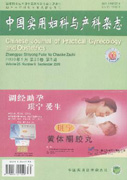Abstract: Objective To evaluate the outcomes and the prognostic factors in advanced cervical cancer. Methods Totally 264 patients with stages Ⅱb-Ⅲ advanced cervical cancer treated in Liaoning Cancer Hospital&Institute from Mar. 2007 to Oct. 2008 were analyzed retrospectively.Results The median follow-up time was 75 months.The 2-year and 5-year overall survival (OS) was respectively 77.7% and 65.5%. The 2-year and 5-year disease-specific survival(DSS) was respectively 78.1% and 66.5%. The 2-year and 5-year disease-free survival(DFS) was respectively 72.7% and 64.2%.The results of univariate analysis showed that the prognostic factors of cervical cancer were related to stage(Ⅱb versus Ⅲ, P<0.01),tumor size(<4 cm、4~6 cm、>6 cm,P<0.01), the pathological type (squamous carcinoma versus adenocarcinoma, P<0.01),vagina invasion (none,upper,middle,lower, P<0.01),pelvic and/or para-aortic lymph nodes metastasis (pelvic and para-aortic negative,only pelvic positive, pelvic and para-aortic positive, without CT, P<0.01) and the nadir hemoglobin (>110 g/L, 95~110 g/L, 75~<95 g/L, 52~<75 g/L, P<0.01).The outcomes of multivariate analysis showed that these clinical characteristics,including stage, the pathological type,pelvic and/or para-aortic nodes and the treatment arm,were associated with OS ,DSS and DFS. The hemoglobin before treatment was associated with DFS ,but not with OS or DSS. Conclusion The patients have poor prognosis with stage Ⅲ, adenocarcinoma, pelvic and/or para-aortic nodes positive, radiotherapy alone and the nadir hemoglobin<75 g/L.

